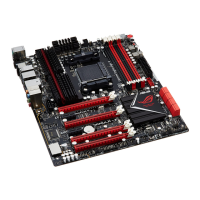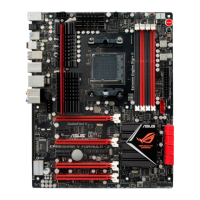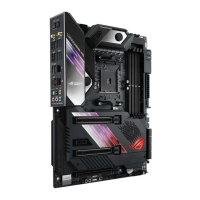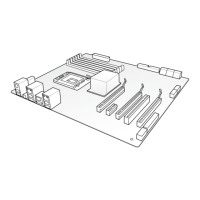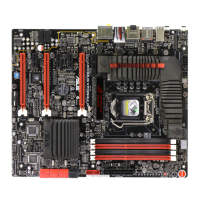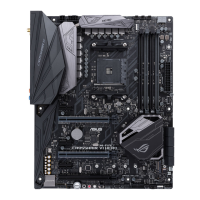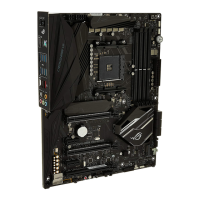3-8 Chapter 3: BIOS setup
Processor ODT [Auto]
Conguration options: [Auto] [240 ohms +/- 20%] [120 ohms +/- 20%] [60
ohms +/- 20%]
DCT1 Information:
CKE drive strength [Auto]
Conguration options: [Auto] [1x] [1.25x] [1.5x] [2x]
CS/ODT drive strength [Auto]
Conguration options: [Auto] [1x] [1.25x] [1.5x] [2x]
ADDR/CMD drive strength [Auto]
Conguration options: [Auto] [1x] [1.25x] [1.5x] [2x]
MEMCLK drive strength [Auto]
Conguration options: [Auto] [0.75x] [1x] [1.25x] [1.5x]
Data drive strength [Auto]
Conguration options: [Auto] [0.75x] [1x] [1.25x] [1.5x]
DQS drive strength [Auto]
Conguration options: [Auto] [0.75x] [1x] [1.25x] [1.5x]
Processor ODT [Auto]
Conguration options: [Auto] [240 ohms +/- 20%] [120 ohms +/- 20%] [60
ohms +/- 20%]
GPU.DIMM Post
The sub-items in this menu display the status of the installed VGA cards and
memory. The eld shows N/A if there’s no device installed on that slot.
DIGI + VRM/Power Control
CPU Load-line Calibration [Auto]
Load-line is dened by Intel VRM spec and affects CPU voltage. The CPU working
voltage will decrease proportionally to CPU loading. Higher Load-line calibration
would get higher voltage and better overclocking performance, but increase the
CPU and VRM thermal. This item allows you to adjust the voltage range from
the following percentages to boost the system performance: 0% (Regular), 25%
(Medium), 50% (High), 75% (Ultra High) and 100% (Extreme).
Conguration options: [Auto] [Regular] [Medium] [High] [Ultra High] [Extreme]
The actual performance boost may vary depending on your CPU speciation.
CPU/NB Load Line Calibration [Auto]
Allows you to select the CPU/NB Load-Line mode.
Conguration options: [Auto] [Regular] [High] [Extreme]

